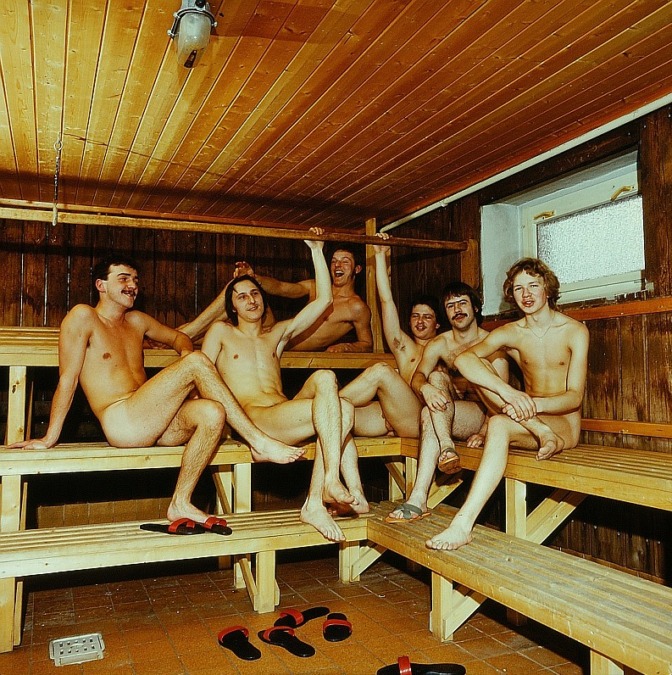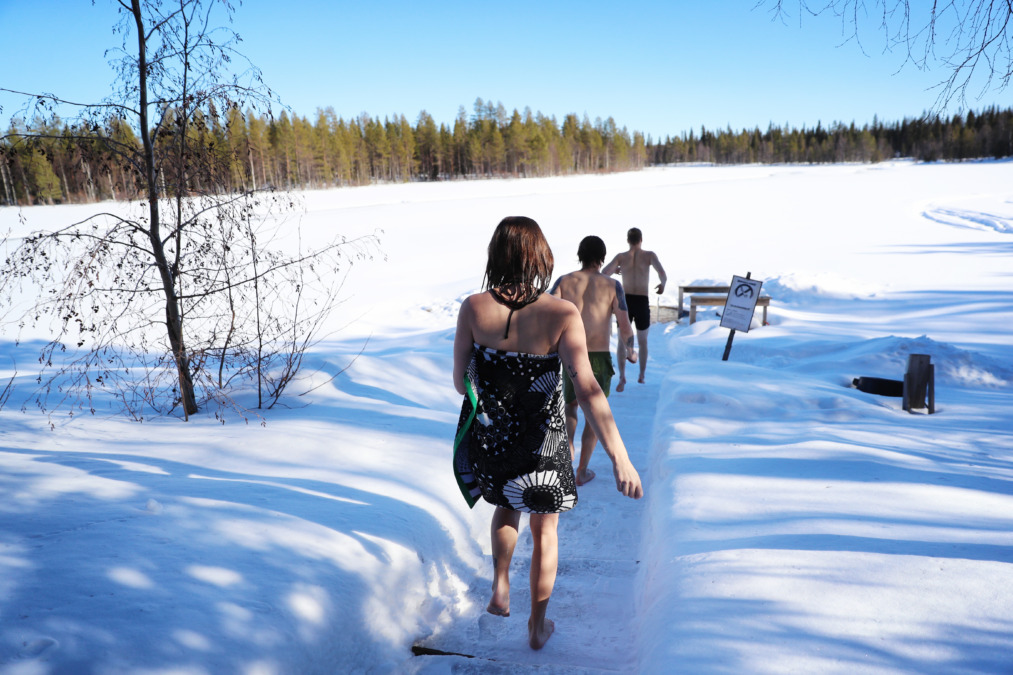Sauna: What’s the Big Deal?
The Scoop on Sauna
Sauna is the ancient Finnish bathing method that uses heat, sweat and steam for cleansing.AND, sauna is the name of the building used for this purpose.
The Finnish sauna is at least 2,000 years old, and remains an important part of life today.In Finland, a country of 5.6 million people, there are 3.3 million saunas.Most often, it was the sauna, not the house, that was the first structure to be built.The first saunas had no chimney and were called savu (smoke) saunas.
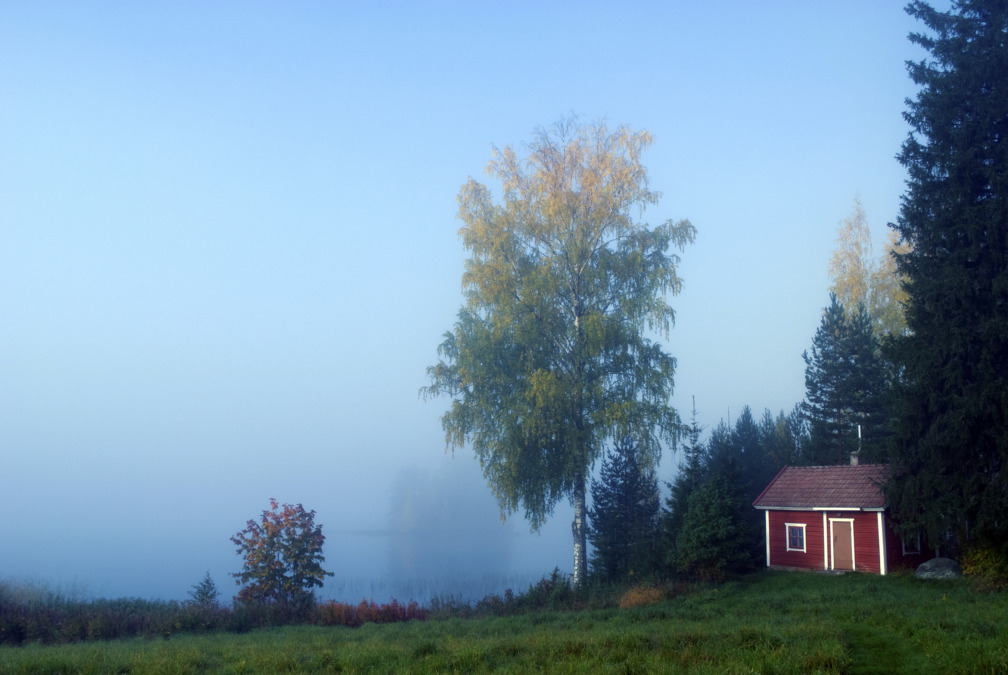
Because it was a family’s most sterile building, sauna was a place for childbirth, treating the ill and dressing the dead.
In additional to purposes of hygiene, saunas were a prominent part of holidays and life events, as well as a means of socializing.
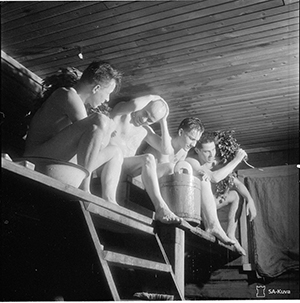
Saunas were so central to their lives, Finnish soldiers in the field would ingeniously construct them under the most challenging circumstances.
Immigrants brought their sauna traditions with them, and many Finnish-Americans have grown up with sauna as a part of life.
Sauna consists of a special room that is heated by a wood-fired or electric stove topped by rocks.
When the stove (kiuas) heats up and the sauna is warm, bathers throw water on the hot rocks to create steam, or löyly. It is this combination of heat and moisture that creates the optimum sauna experience.
Sauna is Revered
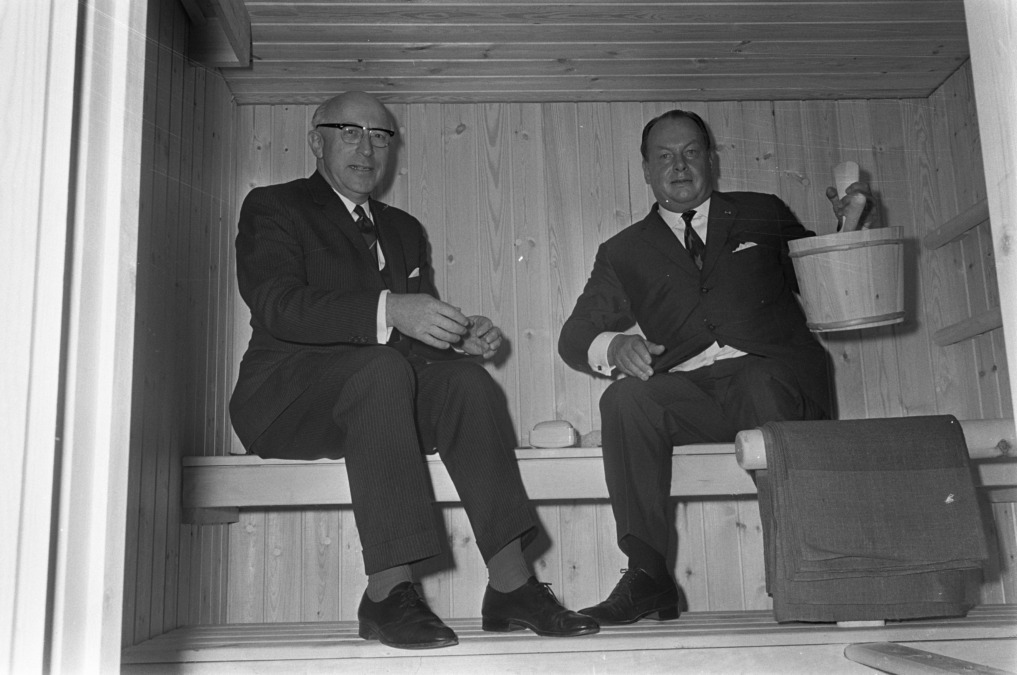
Sauna diplomacy has long been practiced in Finland; President Urho Kekkonen was known for the diplomatic meetings he held in his sauna.
Today, Embassy and other official buildings have saunas and are used for networking and showcasing this aspect of Finnish culture (without business suits, unlike this photo of Teuvo Aura, at right, extending sauna hospitality to Ivo Samkalden of the Netherlands in 1968).
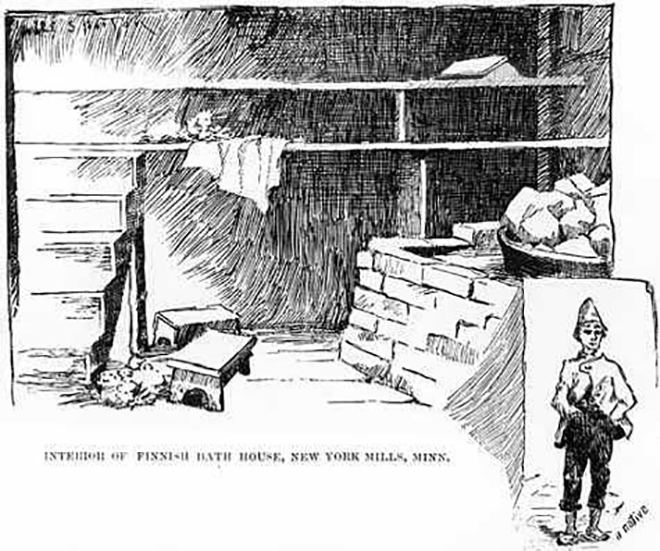
Depending on personal preferences, the ideal heat can range from 160 to 195 degrees Fahrenheit.
Those who need a cooler temperature sit on the lower bench, and those who like it hot perch on the upper bench, as heat and steam rise.
Sauna is believed to have physical, mental, spiritual and social value, and studies have shown that regular use of sauna offers a variety of health benefits.
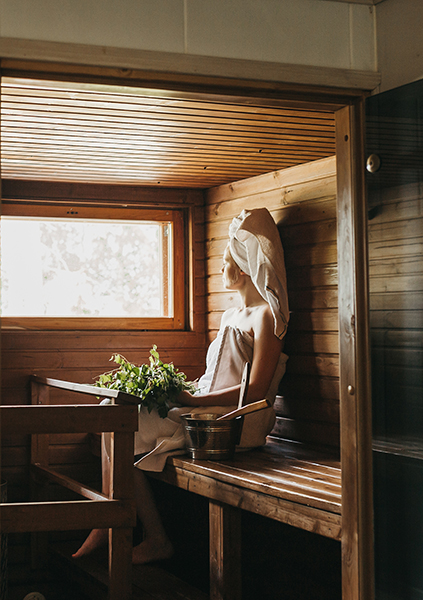
Finland was the first country to develop emojis to represent different aspects of its culture, and sauna symbols are, of course, among them.
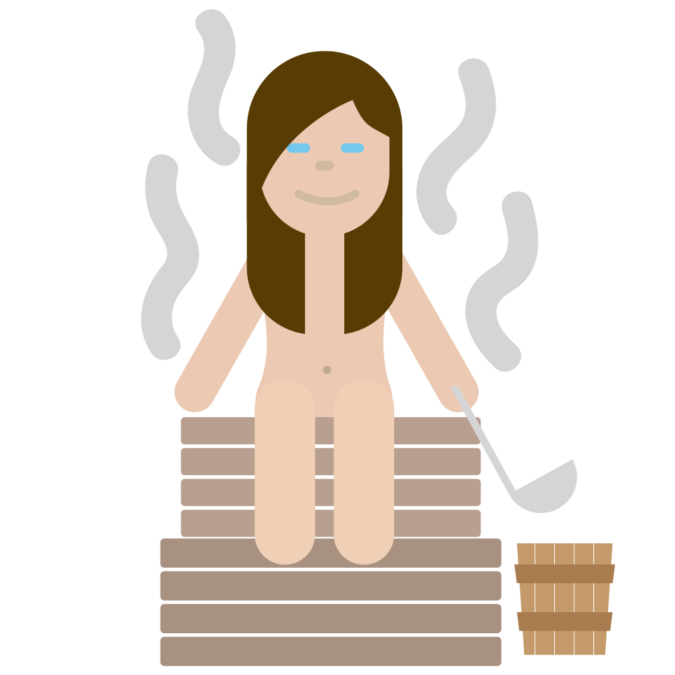

And what other country would honor its bathing tradition by issuing postal stamp depicting sauna activities?
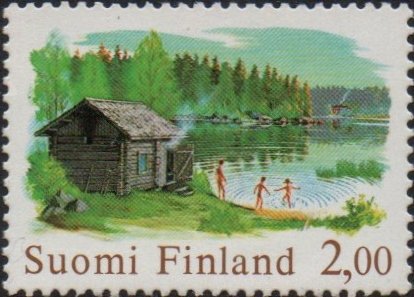
UNESCO Designation
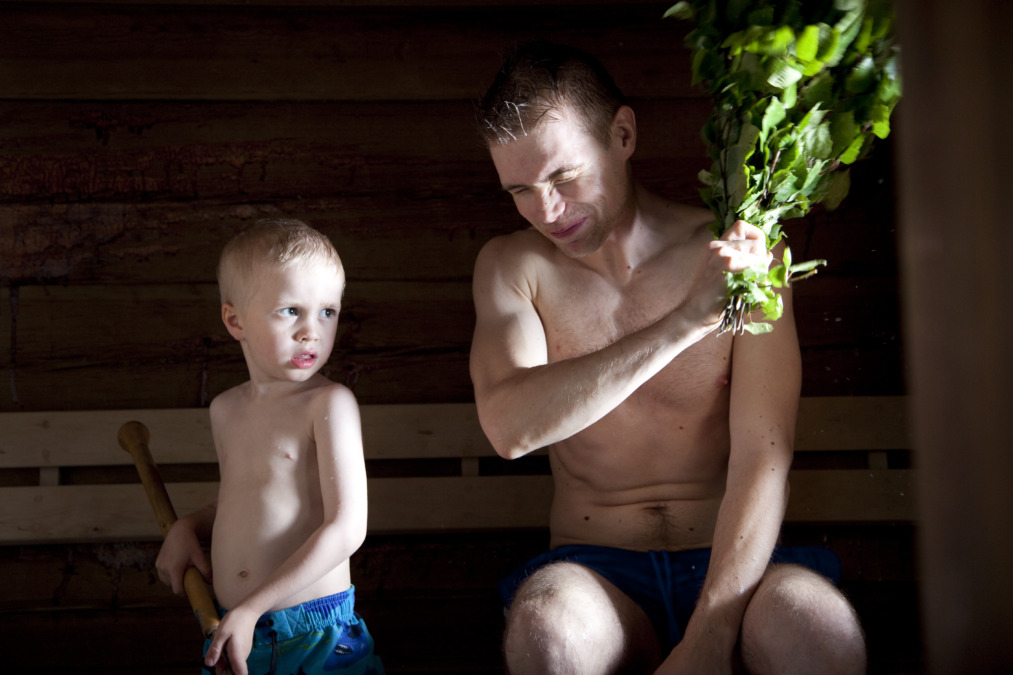
Historically, sauna has been an essential part of life in Finland—so much so that “Sauna culture in Finland” is now on the UNESCO list of Intangible Cultural Heritage.
What does that mean, and what does the sauna represent to Finnish people?
Intangible cultural heritage refers to traditions and processes that we inherit and then pass on, which include all the knowledge, skills and experiences that aren’t embodied in a physical form.
The sauna cycle consists of:
- heating the sauna to optimum level
- basking in the heat
- tossing water on the rocks to create steam and more heat
- rhythmically but gently beating the body with branches gathered into a whisk (vihta)
- stepping out of the hot room for a dose of cold water from a shower or bucket, a jump in a lake–or a roll in the snow
- repeat
